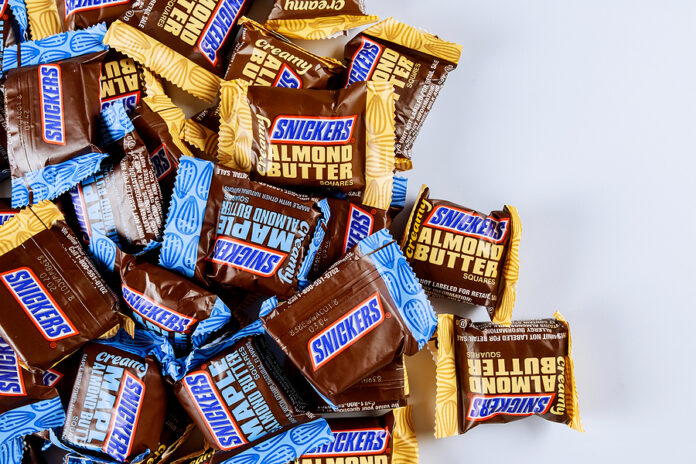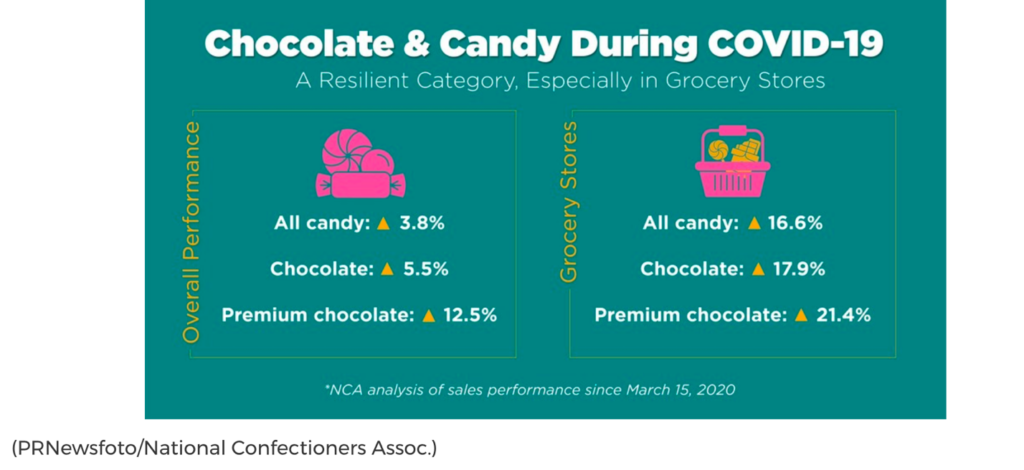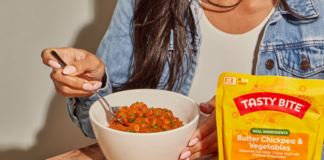
“Halloween celebrations are likely to be different this year, with an earlier start to the season and more geographic differences than in prior years,” said Chairman and CEO Michele Buck, The Hershey Company, during the second quarter earnings call.
Halloween season sales are about 10% of the company’s annual sales. About 50% of those sales come in the two weeks before Halloween for trick-or-treat candy. The other half of sales is for “treat for me” and “candy bowl” occasions, which start early in the season. This year, the company is packaging less Halloween-themed candy (but not less candy overall) to avoid lots of unsold packages that then need to be sold at a discount.
Typically, retail Halloween displays go up mid-August to early September. This year, many retailers set up displays two to four weeks earlier. Early season Halloween candy sales are up, according to the National Confectioners Association (NCA). Total Halloween chocolate and candy sales are 13% higher for the four weeks ending September 6 compared to the same time last year. Halloween chocolate is up 25.3%. The grocery channel is driving the growth, with sales up 17.1%.
In general, overall candy sales have been up during the pandemic.
While this Halloween will look different from previous ones, 70% of moms say they expect to celebrate with their children, according to a survey by Insight to Action. Forty-six percent expect to take their children trick-or-treating in their neighborhoods. In contrast, the National Retail Federation found 23% of adults surveyed planned trick-or-treat activities, down from 29% in 2019. Although some officials question the wisdom of door-to-door trick-or-treating, few communities have banned it.
Even so, traditional handing out of candy will likely be down. More creative ways to celebrate with neighbors are suggested — such as trunk or treating (cars gathered in parking lots where kids take candy from trunks) or leaving bowls of treats on porches for contact-free pickup or tying treats to trees for kids to grab.
The holiday will also see more at-home family and virtual activities. At midnight on October 1, Mars Wrigley launches TREAT TOWN™, an app that lets people virtually trick-or-treat by buying and sending credits for candy purchases. The company is also offering small- and medium-size variety bags for virtual costume parties and family scary movie nights.
Ferrero launches its 31 Days of Halloween program on October 1 to share imaginative ways to celebrate Halloween. Throughout the month, Ferrero is sharing recipes, DIY projects, and other ideas on Pinterest and through influencer partners.
Another company shifting its advertising and promotion strategy to at-home Halloween celebrations is Hostess. Mondelez is focusing on family-size packs for in-home consumption rather than individual items for trick-or-treating.
Tools are available to help consumers with safety considerations. Halloween Central from the NCA offers safety guidance from the CDC, along with celebration ideas. The Harvard Global Health Institute is creating a color-coded map at halloween2020.org that gauges the coronavirus risk level of each county in every state. The site suggests celebration ideas based on risk level, ranging from how to safely trick-or-treat to at-home candy hunts.










